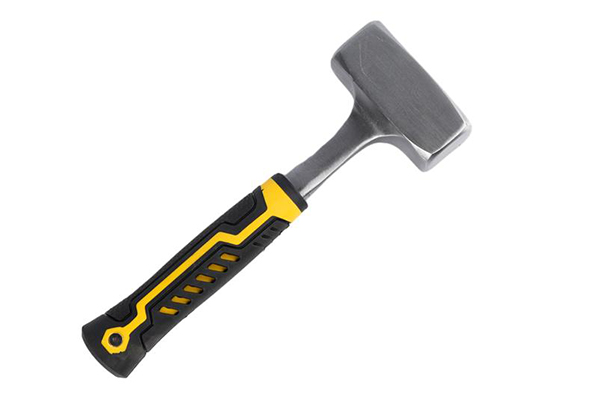Unveiling the Masonry Hammer: A Tool for Shaping and Setting Stone
In the realm of construction, where diverse materials are transformed into enduring structures, the masonry hammer stands as a specialized tool, specifically designed for shaping and setting stone. This essential piece of equipment has been a cornerstone of the mason's craft for centuries, empowering artisans to meticulously craft and assemble stone components into enduring works of architecture.

Delving into the Masonry Hammer's Design
The masonry hammer, also known as a stone hammer or bricklayer's hammer, differs from traditional hammers in several key aspects:
-
Dual-Head Design: The masonry hammer features two distinct striking faces, each tailored for specific tasks. The flat face, typically made of steel or hardened iron, is used for splitting and shaping stone, while the chisel-shaped pein, often made of softer metal, is used for setting and aligning bricks and mortar.
-
Handle Design: The handle of a masonry hammer is typically shorter and thicker than that of a traditional hammer, providing greater control and stability during precision stonework.
-
Weight Distribution: Masonry hammers are designed to be heavier than traditional hammers, allowing for the forceful striking necessary to shape and set stone.
Essential Applications of the Masonry Hammer
The masonry hammer plays a crucial role in a variety of stonework applications:
-
Shaping Stone: The flat face of the hammer is used to split and shape stone into desired forms, ensuring a precise fit and a smooth finish.
-
Setting Bricks: The chisel-shaped pein is employed to align and set bricks into mortar, ensuring a level and stable structure.
-
Removing Excess Mortar: The hammer's flat face can be used to remove excess mortar from joints, creating a clean and aesthetically pleasing finish.
-
Light Demolition: In some cases, the masonry hammer can be used for light demolition tasks, breaking apart loose stone or removing old mortar.
Considerations When Choosing a Masonry Hammer
Selecting the appropriate masonry hammer depends on the mason's preferences and the types of stonework projects they undertake:
-
Hammer Weight: Masonry hammers typically range in weight from 16 to 36 ounces. Heavier hammers provide more striking force for shaping larger stones, while lighter hammers offer better control for precision work with smaller stones.
-
Head Material: The material of the hammer's head impacts its durability and performance. Steel hammers are more durable and suitable for harder stones, while cast iron hammers may be preferred for softer stones due to their softer striking surface.
-
Handle Material: The handle material affects comfort and grip. Wood handles offer a traditional feel and shock absorption, while fiberglass handles are lighter and more resistant to moisture.
Conclusion
The masonry hammer stands as an indispensable tool for masons, providing the necessary force and precision for shaping and setting stone. Its versatility and effectiveness have made it an integral part of the mason's craft for centuries, and it continues to play a vital role in the construction of enduring stone structures. As masons continue to transform stone into architectural masterpieces, the masonry hammer will remain a cornerstone of their craft.
Post time: 11-24-2023





